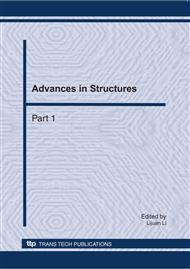p.2488
p.2493
p.2502
p.2507
p.2511
p.2515
p.2521
p.2528
p.2532
Damage Analysis of RC Beams Strengthened with CFRP Sheets by Acoustic Emission Technique
Abstract:
The aim of this work is to develop a procedure to follow the evolution of fracture in RC Beams strengthened with CFRP sheets by means of Acoustic Emission signal analysis. In particular the main goal of this experimental work wants to be the definition of a characteristic signal parameter able to represent the evolution of the fracture dimension in the RC Beams during load test. To this end, laboratory tests were carried out at the Non-Destructive Testing Laboratory of the Politecnico di Torino.
Info:
Periodical:
Pages:
2511-2514
Citation:
Online since:
December 2010
Authors:
Price:
Сopyright:
© 2011 Trans Tech Publications Ltd. All Rights Reserved
Share:
Citation:


